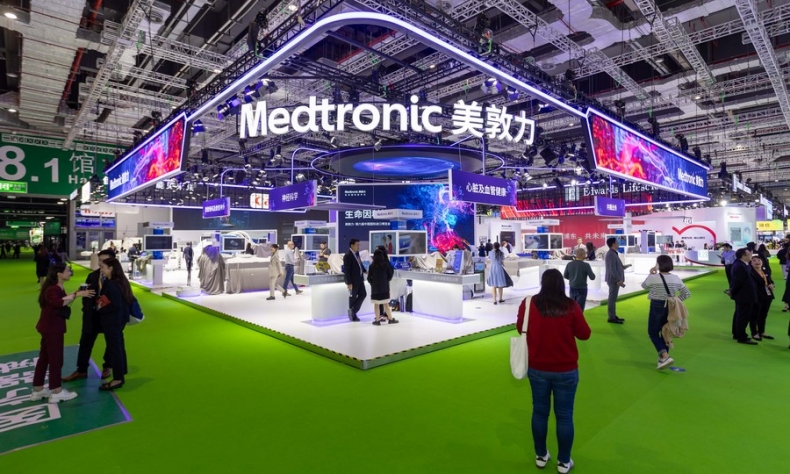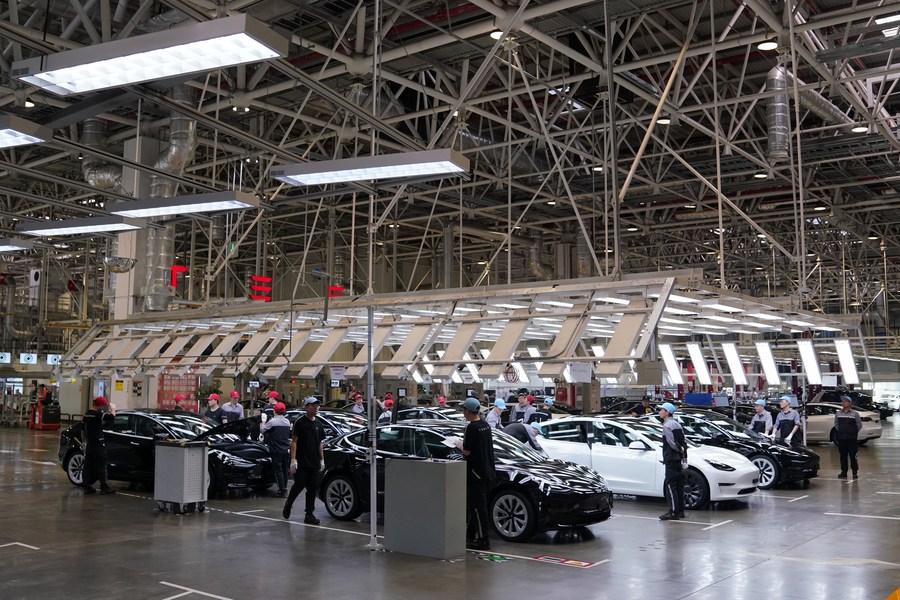Tapping into More

Given current geopolitical conflicts and trade and investment protectionism trends in the global context, Chinese and U.S. companies should engage in more effective and flexible cooperation in global value, industrial and supply chains.
As one of the world’s major markets, China has attracted investment from a wide range of transnational corporations by lowering market access thresholds and providing investment facilitation through the country’s commitment to further opening up and measures to continuously improve its business environment.
U.S. businesses have not only been deeply involved in China’s economic and social development over the past decades, but are also expected to play a more active role in China’s pursuit of modernization, a major undertaking that not only shapes the future of the nation but also has the potential to become a global game-changer by opening doors to international opportunities.
U.S. participation
The four-plus decades of reform and opening up, a process that China embarked on in late 1978, have been about the country learning international rules and benchmarking against advanced international standards.
In 2018, the State Council Information Office, the chief information office of the Chinese Government, released a white paper titled The Facts and China’s Position on China-U.S. Trade Friction, saying that American companies in China have set an excellent example for their Chinese counterparts in terms of technological innovation, marketing management, institutional innovation, promoting market competition and improving industry efficiency.
Manufacturing is one area where U.S. companies have an advantage. Whether in traditional or high-end manufacturing, Chinese partners have benefited greatly from their investments.
China-U.S. cooperation has significantly reduced costs for U.S. manufacturers and created jobs in China. This kind of engagement has also reduced global inflation and provided valuable experiences for other developing countries.
Aviation is another area where U.S. companies invested early in China. Boeing Company, the world’s largest aerospace company, entered the Chinese market in 1972. Over the next two decades, other aircraft manufacturers followed suit, creating a strong demand for aircraft engine maintenance, repair and overhaul services.

The active participation of U.S. companies has guaranteed aviation safety, enabled China’s civil aviation to lead the world in safe operation and promoted the rapid development of air logistics and related industries in China.
Cooperation in the sectors of transportation and automaking boosted China’s manufacturing capacity and gave a direct impetus to the building of infrastructure such as highways and aviation hubs, and helped China gradually become one of the world’s largest producers of transportation means and components, featuring the world’s most complete division of labor system for automobile manufacturing.
Chinese opportunities
A strong advocate of openness, China’s path to modernization is broadly and deeply interconnected with the rest of the world.
In 2013, China proposed the Belt and Road Initiative to boost connectivity along and beyond the ancient Silk Road routes. The initiative provides a stage for joint action by participating countries to enhance their development momentum through cooperation.
Over the past decade, many global companies, including several based in the U.S., have already reaped the benefits of this initiative.
China stands for a type of cooperation based on the principle of joint contribution, extensive consultation and shared benefits. The country never acts in small blocs or excludes other countries from participating in international cooperation.
And it is precisely this concept of Chinese modernization that provides support for all parties to benefit. The path toward high-quality development China finds itself on today, not only contains elements that are common to the modernization processes of all countries, but also features components unique to the Chinese context.
Chinese modernization will provide more opportunities for businesses from the U.S. and all other countries, and there is “enormous potential, vast space and a promising future” for greater economic and trade cooperation between the two countries, President Xi Jinping said in a congratulatory letter, read out by Chinese Ambassador to the U.S. Xie Feng at the Jubilee Gala of the U.S.-China Business Council (USCBC) in Washington, D.C., last December.
China has ramped up legal protection of the rights and interests of foreign investors, and at the same time endeavored to address their concerns through mechanisms such as roundtables for foreign-invested enterprises and the special working group on key foreign-funded projects, thus creating more stable and attractive conditions for foreign investment.

China’s further opening up to the world will allow some U.S. multinationals featured on the Fortune Global 500 list to expand their market boundaries, enhance their ability to participate in different markets and reduce the costs of internal resource allocation and business activities.
Relatively small U.S. businesses may also develop a sound economic and trade performance by leveraging their advantages in their respective areas of expertise, tap into market segments and seek more opportunities in the increasingly open Chinese market.
Chinese modernization emphasizes paying more attention to environmental factors in agriculture and industrial production, reducing the amount of irreversible environmental damage, and phasing out energy-intensive and high-emission industries.
As early adopters of industrialization and modernization, U.S. enterprises have greater awareness of the impact of economic activities on the environment. They have developed and applied technologies to manage and reduce these impacts, and can bring more of these innovations to China.
Seizing the moment
The opportunities created by Chinese modernization ensure a fair competition and development environment for investors from all countries. To make good use of these advantages and seek mutually beneficial coordinated growth, it is advisable for U.S. companies to gain a deeper understanding of the changing Chinese market and make informed decisions.
In their economic and trade activities, U.S. enterprises should overcome the protectionist mentality imposed by their government and seek to establish more equitable and mutually beneficial economic and trade relations.
Given current geopolitical conflicts and trade and investment protectionism trends in the global context, Chinese and U.S. companies should engage in more effective and flexible cooperation in global value, industrial and supply chains.
U.S. businesses can play a crucial role in Belt and Road cooperation, benefiting from the supply chain, capital, human resources and management needs created by participation in related projects. The strengths of U.S. businesses can inject new impetus into the initiative and help all participants better achieve their goals.
China and the U.S. should improve the ability to identify risks and work together to reduce the impact of external shocks. This way, they can create a better environment for long-term, sustainable development.
The author is a research fellow with the Institute of American and Oceanian Studies of the Chinese Academy of International Trade and Economic Cooperation under the Ministry of Commerce.
 Facebook
Facebook
 Twitter
Twitter
 Linkedin
Linkedin
 Google +
Google +










